Grow massive cucumbers, you say? Absolutely! Imagine strolling through your garden, the envy of the neighborhood, as you harvest cucumbers so large they practically require two hands to carry. Forget those tiny, store-bought specimens; we’re talking about prize-winning, juicy, and flavorful cucumbers grown right in your backyard. This isn’t just a dream; it’s an achievable reality with a few simple DIY tricks and hacks that I’m excited to share with you.
Cucumbers have a rich history, dating back thousands of years to ancient India. They’ve been cultivated and enjoyed across cultures, from the Romans to the Chinese, each developing their own unique methods for maximizing their cucumber yield. While we might not be using ancient techniques, we can certainly learn from the past and apply modern DIY approaches to achieve incredible results.
Let’s face it, gardening can sometimes feel like a gamble. You put in the effort, but the results can be unpredictable. But with these DIY tricks, you’ll be able to grow massive cucumbers consistently, year after year. These aren’t just random tips; they’re proven methods that address common challenges like nutrient deficiencies, pest control, and proper watering techniques. I’m here to guide you through each step, ensuring you have the knowledge and confidence to cultivate a cucumber crop that will make you proud. Get ready to roll up your sleeves and transform your garden into a cucumber paradise!
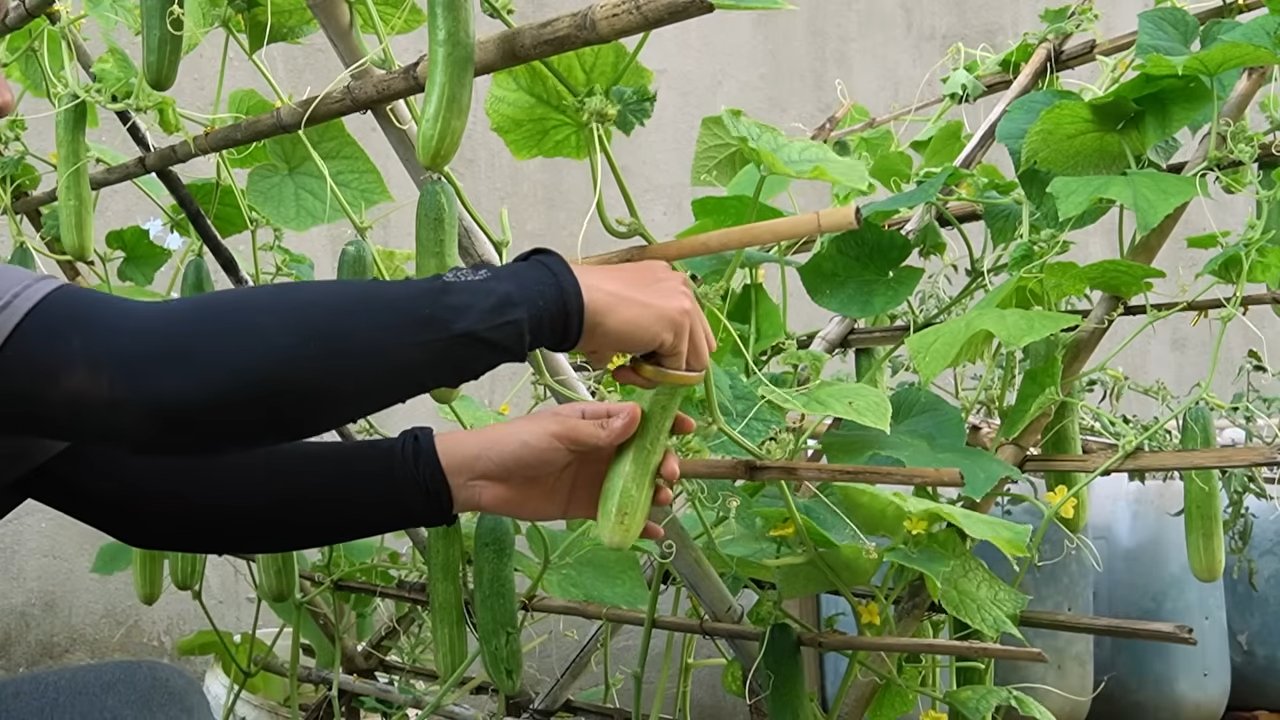
Unlocking Cucumber Colossus: My Guide to Growing Giant Cucumbers!
Hey there, fellow gardening enthusiasts! I’m so excited to share my secrets for growing cucumbers that are so big, they’ll make your neighbors green with envy (pun intended!). Forget those tiny, store-bought cukes – we’re talking about cucumbers that are practically weapons (okay, maybe not, but they’re seriously impressive!). This isn’t just about growing cucumbers; it’s about cultivating behemoths! I’ve spent years tweaking my methods, and I’m confident that if you follow these steps, you’ll be harvesting cucumber giants in no time.
Choosing the Right Variety: The Foundation of Giant Cucumbers
The first, and arguably most crucial, step is selecting the right cucumber variety. Not all cucumbers are created equal! Some are bred for pickling, others for slicing, and some are just naturally larger than others. Here are a few of my favorite varieties for growing truly massive cucumbers:
* ‘Boothby’s Blonde’: This heirloom variety is known for its mild flavor and impressive size. They can easily reach over a foot long!
* ‘Armenian Cucumber’ (also known as ‘Yard Long Cucumber’): While technically a melon, this variety looks and tastes like a cucumber. As the name suggests, they can grow incredibly long – up to three feet!
* ‘Chinese Slangen’: This is another long and slender variety that can reach impressive lengths. They have a slightly ridged skin and a crisp, refreshing flavor.
* ‘Lemon Cucumber’: Don’t let the name fool you; these are still cucumbers! They’re round and yellow, resembling lemons, and can grow surprisingly large. They have a mild, sweet flavor.
* ‘Azza’: This variety is a hybrid known for its disease resistance and ability to produce large, uniform cucumbers.
Important Note: Always check the seed packet or plant label for specific growing instructions and expected size.
Preparing the Soil: A Cucumber’s Paradise
Cucumbers are heavy feeders, meaning they need a lot of nutrients to grow properly, especially when you’re aiming for giant sizes. Preparing the soil is absolutely essential. Here’s my go-to method:
* Sunlight: Cucumbers need at least 6-8 hours of direct sunlight per day. Choose a location that gets plenty of sun.
* Soil Type: Cucumbers prefer well-drained, fertile soil with a pH between 6.0 and 7.0.
* Amendments: This is where the magic happens! I like to amend my soil with the following:
* Compost: Lots and lots of compost! This provides essential nutrients and improves soil drainage. I usually add a 3-4 inch layer of compost to the planting area.
* Well-rotted Manure: Manure is another excellent source of nutrients. Make sure it’s well-rotted to avoid burning the plants.
* Bone Meal: Bone meal is rich in phosphorus, which is essential for root development.
* Epsom Salts: Epsom salts provide magnesium, which can help prevent blossom-end rot (a common problem with cucumbers). I add about a tablespoon per plant.
* Tilling: After adding the amendments, till the soil to a depth of at least 12 inches to incorporate everything.
Planting Your Cucumber Seeds or Seedlings: Giving Them a Strong Start
You can start cucumber seeds indoors or direct sow them in the garden. I prefer to start them indoors about 3-4 weeks before the last expected frost.
* Starting Seeds Indoors:
1. Use seed-starting trays or small pots filled with seed-starting mix.
2. Sow the seeds about ½ inch deep.
3. Keep the soil moist but not soggy.
4. Provide warmth (a heat mat can be helpful).
5. Once the seedlings have a few true leaves, they’re ready to transplant.
* Direct Sowing:
1. Wait until the soil has warmed up to at least 60°F (15°C).
2. Sow the seeds about ½ inch deep, spacing them according to the variety’s instructions (usually 12-18 inches apart).
3. Keep the soil moist until the seeds germinate.
* Transplanting Seedlings:
1. Harden off the seedlings by gradually exposing them to outdoor conditions for a week before transplanting.
2. Choose a cloudy day to transplant to minimize stress.
3. Dig a hole slightly larger than the root ball.
4. Gently remove the seedling from the pot and place it in the hole.
5. Backfill with soil and water thoroughly.
Providing Support: Helping Them Reach for the Sky
Cucumbers are vining plants, so they need support to grow properly. This is especially important when you’re growing large varieties, as the weight of the cucumbers can easily break the vines.
* Trellises: Trellises are a great option for supporting cucumbers. They provide a sturdy structure for the vines to climb.
* Cages: Tomato cages can also be used to support cucumbers, although they may not be tall enough for some of the larger varieties.
* Fences: If you have a fence, you can train the cucumber vines to grow along it.
Training the Vines: As the cucumber vines grow, you’ll need to train them to climb the support structure. Gently guide the vines and use plant ties to secure them if necessary.
Watering and Fertilizing: Fueling the Growth
Consistent watering and fertilization are crucial for growing large cucumbers.
* Watering: Cucumbers need consistent moisture, especially during hot weather. Water deeply and regularly, aiming for about 1 inch of water per week. Avoid overhead watering, as this can lead to fungal diseases. Drip irrigation or soaker hoses are ideal.
* Fertilizing: Feed your cucumber plants regularly with a balanced fertilizer. I like to use a liquid fertilizer diluted to half strength every 2-3 weeks. You can also side-dress with compost or well-rotted manure.
* Foliar Feeding: I also like to give my cucumber plants a foliar feeding every now and then. This involves spraying the leaves with a diluted fertilizer solution. This can help boost growth and prevent nutrient deficiencies.
Pruning: Directing the Plant’s Energy
Pruning can help improve air circulation and direct the plant’s energy towards producing larger cucumbers.
* Removing Suckers: Suckers are small shoots that grow from the base of the plant. Remove these to encourage the plant to focus its energy on the main vines.
* Pinching Off Flowers: If you want to grow really large cucumbers, you can pinch off some of the flowers. This will reduce the number of cucumbers the plant produces, but it will allow the remaining cucumbers to grow larger. I usually focus on the first few flowers that appear.
* Removing Yellowing Leaves: Remove any yellowing or diseased leaves to prevent the spread of disease and improve air circulation.
Pest and Disease Control: Protecting Your Investment
Cucumbers are susceptible to a variety of pests and diseases. Here are some common problems and how to deal with them:
* Cucumber Beetles: These beetles can damage leaves and spread diseases. Handpick them off the plants or use insecticidal soap.
* Squash Bugs: Squash bugs can suck the sap from the plants, causing them to wilt and die. Handpick them off the plants or use insecticidal soap.
* Powdery Mildew: This fungal disease causes a white powdery coating on the leaves. Improve air circulation and use a fungicide if necessary.
* Downy Mildew: This fungal disease causes yellow spots on the leaves. Improve air circulation and use a fungicide if necessary.
* Blossom-End Rot: This is caused by a calcium deficiency and results in the end of the cucumber rotting. Ensure consistent watering and add calcium to the soil.
Prevention is Key: The best way to deal with pests and diseases is to prevent them in the first place. Keep your garden clean, provide good air circulation, and water properly.
Harvesting: The Moment of Truth!
Harvest your cucumbers when they reach the desired size. The size will depend on the variety you’re growing.
* Check Regularly: Check your cucumber plants regularly, as cucumbers can grow very quickly.
* Use a Knife or Pruning Shears: Use a sharp knife or pruning shears to cut the cucumbers from the vine.
* Handle with Care: Handle the cucumbers carefully to avoid bruising them.
Enjoy Your Giant Cucumbers! Now that you’ve harvested your giant cucumbers, it’s time to enjoy them! You can slice them, dice them, pickle them, or even make cucumber sandwiches. The possibilities are endless!
Extra Tips for Cucumber Success:
* Companion Planting
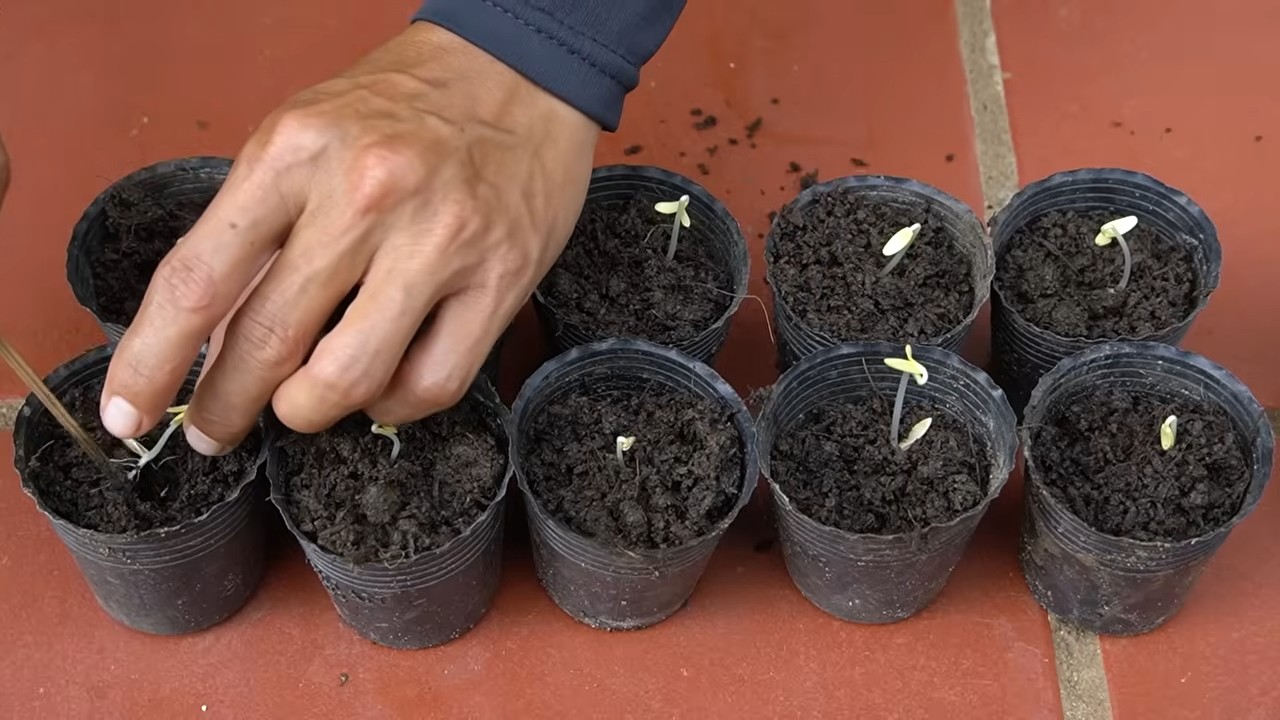
Conclusion
So, there you have it! Unlocking the secret to growing massive cucumbers isn’t about complicated techniques or expensive equipment. It’s about understanding the plant’s needs and providing the right environment for it to thrive. This DIY trick, focusing on consistent watering, nutrient-rich soil, and strategic pruning, is a game-changer for any gardener, regardless of experience level.
Why is this a must-try? Because it’s effective, affordable, and incredibly rewarding. Imagine the satisfaction of harvesting cucumbers so large and flavorful that they become the star of your summer salads, pickles, and refreshing drinks. This isn’t just about size; it’s about quality. By implementing these simple steps, you’ll not only grow bigger cucumbers but also healthier, more delicious ones.
Don’t be afraid to experiment with variations! Try different types of compost to see which one your cucumber plants respond to best. Consider adding companion plants like marigolds or nasturtiums to deter pests naturally. You can also adjust the pruning technique based on your specific cucumber variety – some varieties benefit from more aggressive pruning than others. If you are growing vertically, ensure your trellis is strong enough to support the weight of these behemoth cucumbers.
We’ve seen incredible results with this method, and we’re confident you will too. The key is consistency and observation. Pay attention to your plants, adjust your approach as needed, and don’t be discouraged if you don’t see massive cucumbers overnight. Gardening is a journey, and every season brings new lessons.
Now, it’s your turn! We wholeheartedly encourage you to try this DIY trick for growing massive cucumbers. We are certain that you will be amazed at the results. Plant those seeds, prepare your soil, and get ready to harvest the biggest, most flavorful cucumbers you’ve ever grown.
But the journey doesn’t end there. We want to hear about your experiences! Share your photos, tips, and challenges in the comments below. Let’s create a community of cucumber enthusiasts and learn from each other. What worked for you? What didn’t? What unique variations did you try? Your insights could help other gardeners achieve their cucumber-growing dreams. Let’s cultivate a garden of knowledge together!
Remember, growing massive cucumbers is within your reach. With a little effort and the right techniques, you can transform your garden into a cucumber paradise. So, get out there, get your hands dirty, and get ready to be amazed! Happy gardening!
Frequently Asked Questions (FAQ)
What kind of cucumber varieties are best for growing massive cucumbers?
While this DIY trick can enhance the growth of most cucumber varieties, some are naturally predisposed to growing larger than others. Look for varieties specifically labeled as “slicing” or “burpless,” as these tend to produce larger fruits. Some popular choices include ‘English Telegraph,’ ‘Armenian,’ ‘Boothby’s Blonde,’ and certain Asian cucumber varieties. Research your specific climate and growing conditions to choose a variety that thrives in your region. Remember that hybrid varieties often exhibit more consistent growth and size compared to heirloom varieties. Don’t be afraid to experiment with different varieties to find your personal favorite for size and flavor.
How often should I water my cucumber plants to achieve massive growth?
Consistent watering is crucial for growing massive cucumbers. Aim for deep watering two to three times per week, ensuring the soil is thoroughly saturated. The frequency may need to be adjusted based on your climate and soil type. Hot, dry weather will require more frequent watering, while cooler, wetter conditions will require less. The best way to determine if your plants need water is to check the soil moisture. Stick your finger about an inch into the soil; if it feels dry, it’s time to water. Avoid overhead watering, as this can lead to fungal diseases. Instead, water at the base of the plant, using a soaker hose or drip irrigation system.
What type of fertilizer is best for growing massive cucumbers?
Cucumbers are heavy feeders and require a nutrient-rich soil to support their rapid growth. Before planting, amend your soil with plenty of compost or well-rotted manure. During the growing season, fertilize your plants every two to three weeks with a balanced fertilizer (e.g., 10-10-10) or a fertilizer specifically formulated for vegetables. Look for fertilizers that are high in phosphorus and potassium, as these nutrients are essential for fruit development. You can also supplement with organic fertilizers like fish emulsion or seaweed extract. Avoid over-fertilizing, as this can lead to excessive foliage growth at the expense of fruit production.
How important is pruning for growing massive cucumbers?
Pruning is an essential part of growing massive cucumbers. It helps to improve air circulation, reduce the risk of disease, and direct the plant’s energy towards fruit production. Remove any yellowing or diseased leaves, as well as any suckers (small shoots that grow from the base of the plant). For vining varieties, you can also prune the lateral branches to encourage the development of larger fruits. Be careful not to remove too many leaves, as the plant needs foliage to photosynthesize and produce energy. The goal is to create a balance between foliage and fruit.
What are some common pests and diseases that can affect cucumber plants, and how can I prevent them?
Cucumber plants are susceptible to several pests and diseases, including aphids, cucumber beetles, squash bugs, powdery mildew, and downy mildew. To prevent these problems, start by choosing disease-resistant varieties. Practice good garden hygiene by removing any plant debris and weeds. Encourage beneficial insects like ladybugs and lacewings, which prey on aphids and other pests. Use row covers to protect young plants from pests. If you notice signs of disease, treat your plants with an appropriate fungicide or insecticide. Organic options include neem oil, insecticidal soap, and copper fungicide.
How long does it take to grow massive cucumbers using this DIY trick?
The time it takes to grow massive cucumbers will vary depending on the variety, climate, and growing conditions. However, with consistent watering, fertilization, and pruning, you can typically expect to harvest your first cucumbers within 50 to 70 days of planting. The size of the cucumbers will continue to increase as the plant matures. Be patient and monitor your plants closely. Remember that gardening is a process, and it takes time to achieve optimal results.
Can I grow massive cucumbers in containers?
Yes, you can grow massive cucumbers in containers, but you’ll need to choose a large container (at least 10 gallons) and provide adequate support for the vines. Use a well-draining potting mix and fertilize your plants regularly. Container-grown cucumbers may require more frequent watering than those grown in the ground. Choose bush varieties or compact vining varieties that are well-suited for container gardening.
What if my cucumbers are growing, but they are not getting very big?
If your cucumbers are growing but not reaching the desired size, there are several factors to consider. First, ensure that your plants are receiving adequate water and nutrients. Check the soil moisture and fertilize regularly. Second, make sure that your plants are getting enough sunlight (at least six hours per day). Third, prune your plants to direct their energy towards fruit production. Finally, consider the variety of cucumber you are growing. Some varieties are naturally smaller than others.
How do I know when my massive cucumbers are ready to harvest?
The best time to harvest your cucumbers will depend on the variety and your personal preference. Generally, cucumbers are ready to harvest when they are firm, green, and have reached the desired size. Overripe cucumbers will turn yellow and become seedy. Harvest your cucumbers regularly to encourage the plant to produce more fruit. Use a sharp knife or pruners to cut the cucumbers from the vine, leaving a small stem attached.

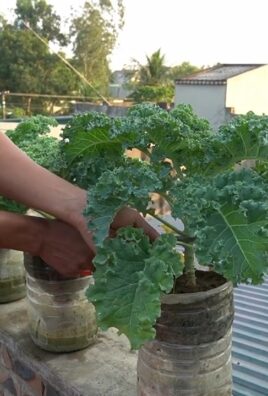
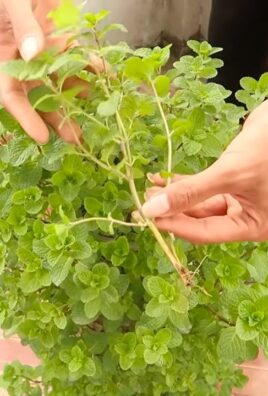
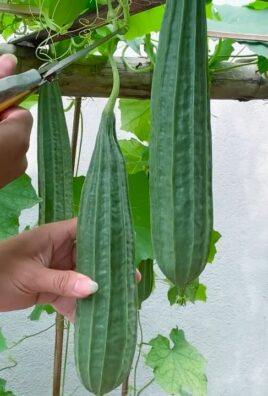
Leave a Comment